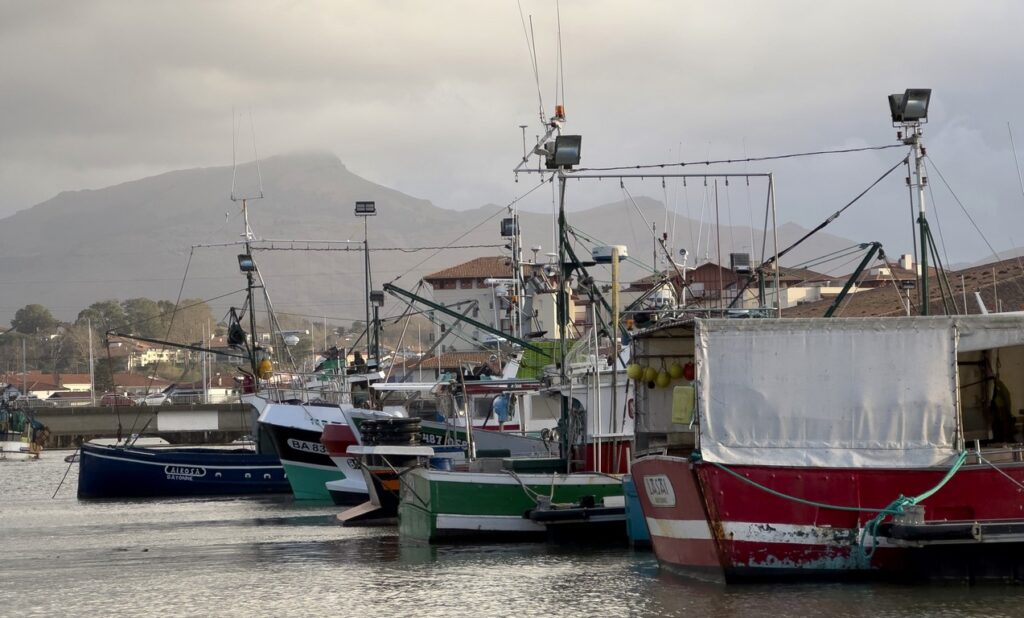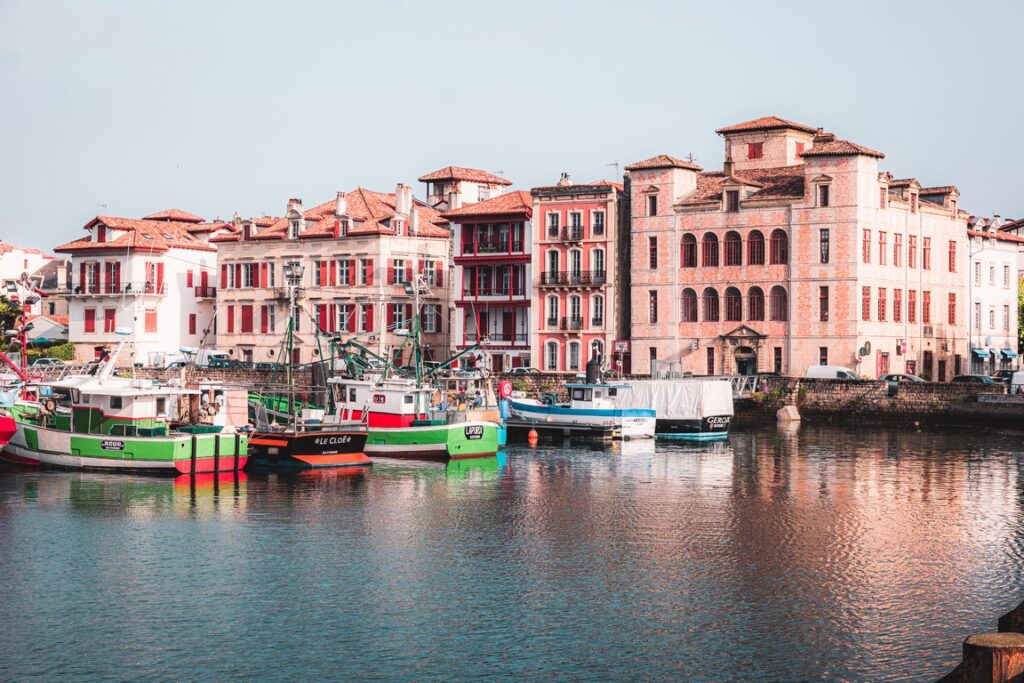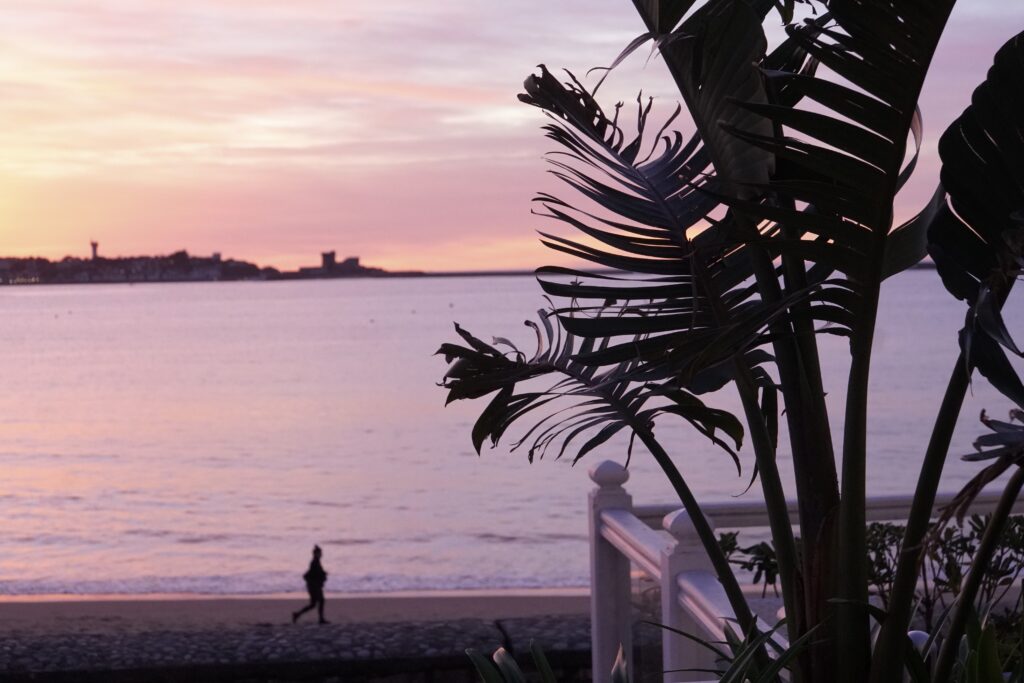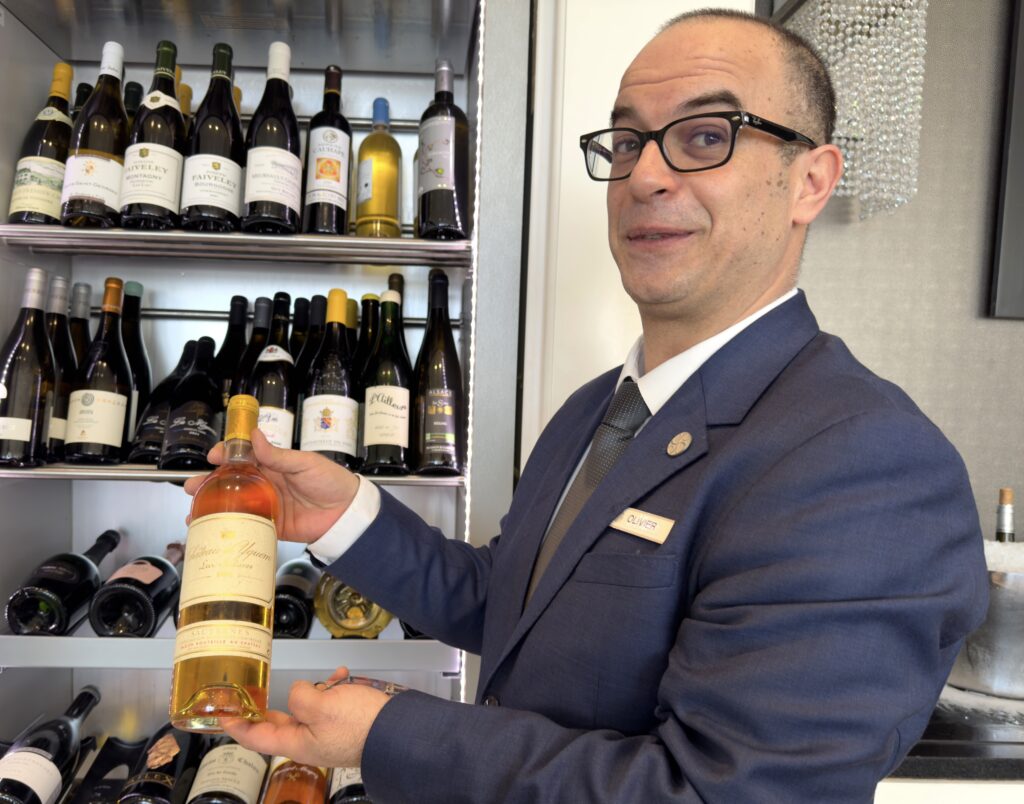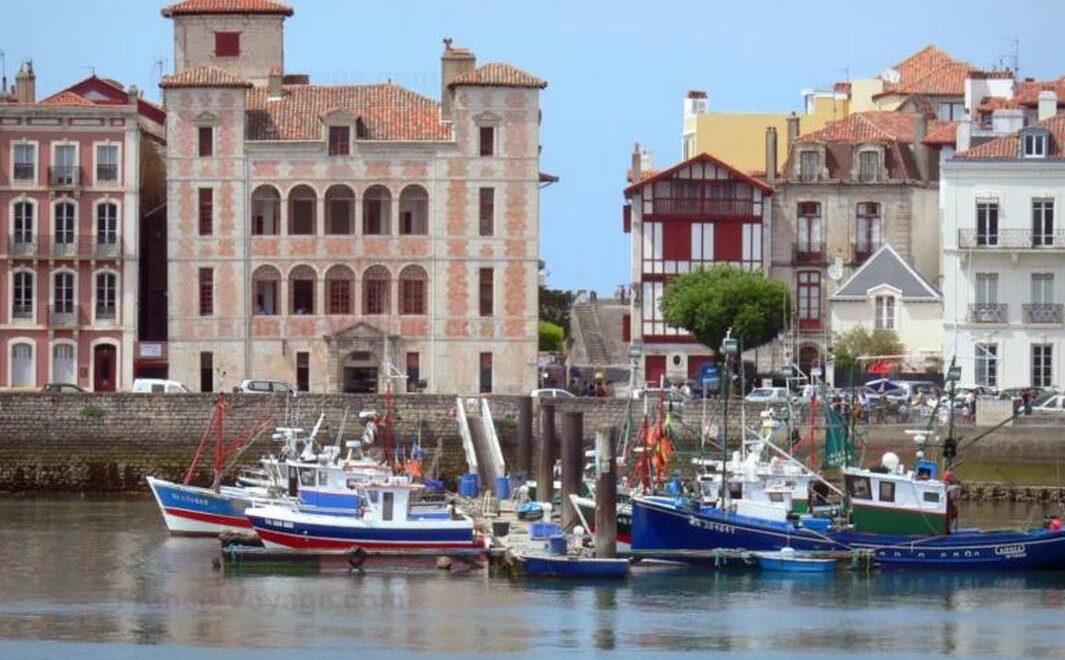
In the melting pot of Basque culture that is Saint-Jean-de-Luz and its famous bay overlooking the Atlantic Ocean, the Grand Hôtel is a chic and elegant establishment for a stay of leisure and relaxation.
Corsairs and Pirates

Olivier Fréchet lives in Urrugne, near Saint-Jean-de-Luz. This historian, who specialises in the history of Saint-Jean-de-Luz, gives us a brief history of his beloved town. "Our town had its month of glory when King Louis XIV was married in 1660. The ceremonies took place from 8 to 9 June, the day of the wedding celebrated in the Church of Saint-Jean-Baptiste. From the 16th to the 19th century, Basque privateers turned the Bay of Biscay into a veritable "viper's nest", according to the English, who hunted them down with little success. Their golden age was during the wars of the reigns of Louis XIV and Louis XV". Unlike the pirate, who acts on his own behalf, the privateer, armed with a letter of marque, is authorised to seize enemy ships on the orders of the king. Among the town's most famous privateers were the Issagaray corsairs, who were received and congratulated by the Sun King. But there was also Jean d'Albarrade, who ended his career as Minister of the Navy in 1794. And the last corsair to date, Pellot Montvieux, known as the Basque Fox, who died in 1856. Ducontenia Park also owes its name to a privateer: Captain Duconte.
Whale, sardine, cod and tuna fishing have ensured the reputation of Basque fishermen. Whaling began to be organised in the 9th century and became a mainstay of the local economy. As cetaceans became rarer in the Bay of Biscay, the Basques pursued them to the far north! The 18th century saw the end of this hunt and the decline of cod fishing. On the other hand, sardine fishing took off. It was dethroned around 1950 by tuna fishing. Olivier Fréchet attributes the economic decline to the scarcity of fish, due in particular to overfishing by Spanish sailors equipped with modern, powerful equipment financed in part by European aid funds.
Under the Revolution and the Empire, the Basque Country in general and Saint-Jean-de-Luz in particular suffered greatly. The continuous wars with Spain brought regiments of soldiers, with their requisitions, looting and fighting.
Sites steeped in history
A town of art, history and heritage, Saint-Jean-de-Luz boasts a number of buildings that recall the days when privateers terrorised the Spanish, English and Dutch. In 1691, a letter from the Duke of Grammont to King Louis XIV praised the exploits of the famous Coursic, a privateer who had captured more than a hundred ships and brought them back to the port. It stipulated that "His Majesty could go from Saint-Jean-de-Luz to Ciboure without getting his feet wet by using the decks of boats taken from the enemy."
Place Louis XIV
Surrounded by superb residences and numerous restaurants, the Place Louis XIV is one of the liveliest spots in town. In summer, patron saint festivals, balls, toros de fuego and concerts give the square a festive air.
The House of Louis XIV or Maison Lohobiague

The house, built between 1643 and 1649 for the shipowner Johannis de Lohobiague, mayor of the town and heir to a large racing family, dominates the square. It was renamed the "Maison Louis XIV" after the young king stayed here for his wedding in 1660. This imposing stone residence, built in the style of Louis XIII, has two facades surrounding a square plan some twenty metres long. Its façade with its galleries gives it the air of a Palladian villa.
The Town Hall (Herriko Etxea)
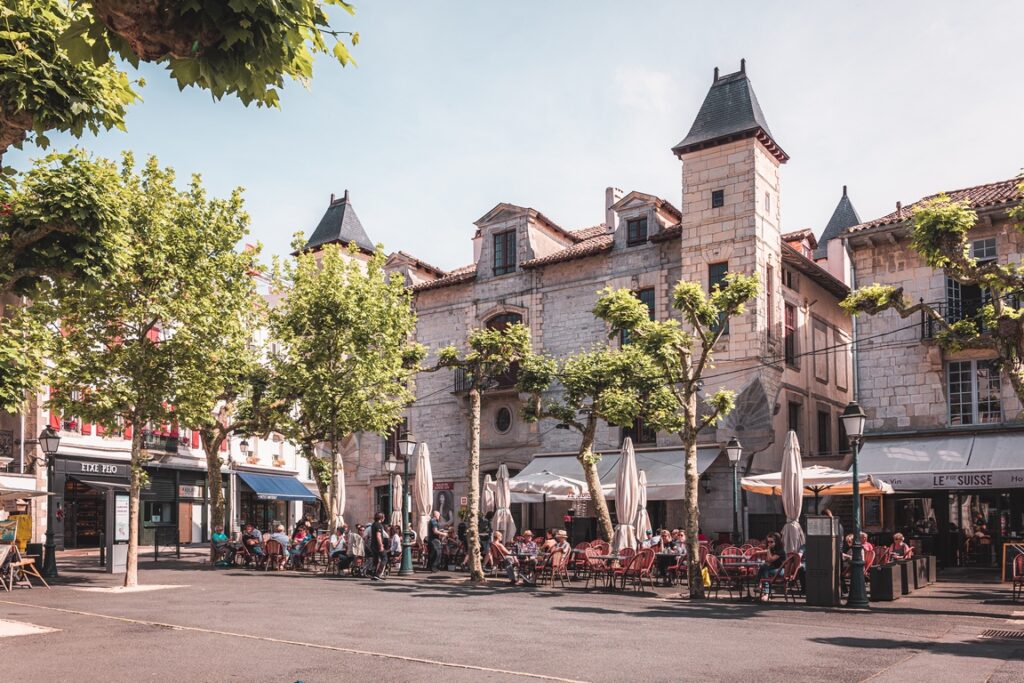
The U-shaped Town Hall was built between 1656 and 1657 on a marshy area bordering the port. The story goes that its construction was the result of revenge taken by the bayle of the time, Jean de Casabielhe, against Maria Sol to block her view of the port. The widow of Johannis de Lohobiague and owner of the Maison Louis XIV refused the bayle's advances and was punished as a result.
The House of the Infanta or Joanoenia House
Built in 1640 by a wealthy shipowner, Joannot de Haraneder (hence the name Joanoenia), this building housed Maria Theresa for her wedding ceremonies in June 1660. Its pink brick and stone façade is reminiscent of an Italian palace.
Rue Gambetta
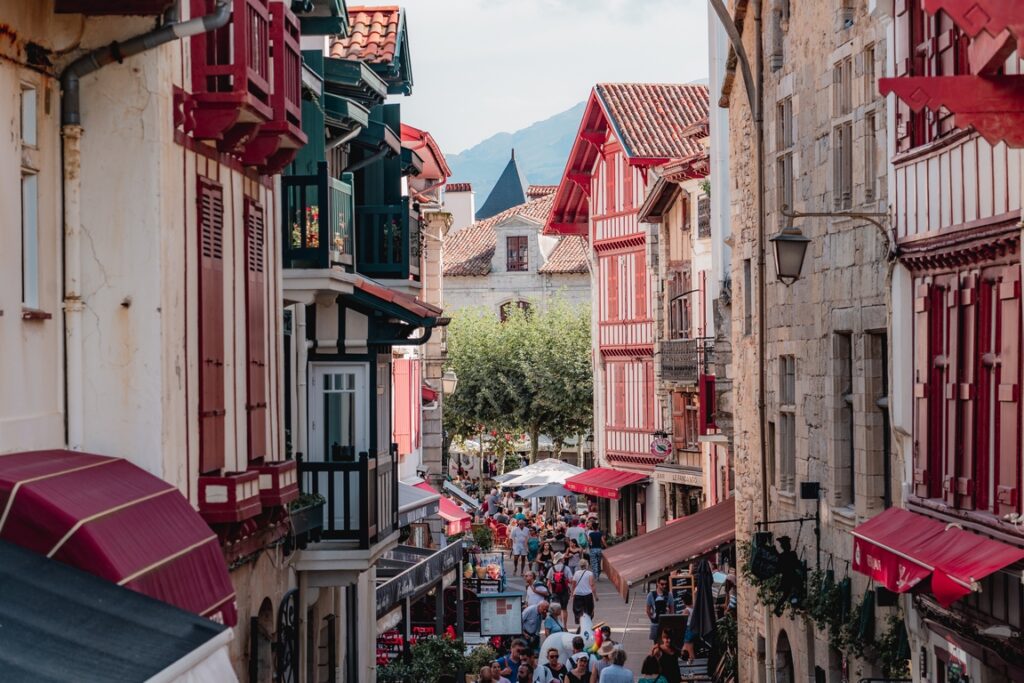
Once a road linking Bayonne to Spain, this pedestrianised street is one of the city's busiest thoroughfares. It stretches from the port to Boulevard Thiers. Lined with numerous shops, you can admire the magnificent old houses, including the Maison Gorritienea, which belonged to the famous privateer Joachin.
The seafront

Saint-Jean-Baptiste Church
This church was the setting for the marriage of Louis XIV to the Infanta Maria Theresa of Austria. The oldest part dates from the 15th century.
Most of the alterations took place in the 17th century: creation of side chapels, widening of the heart, opening of the large portal, closing of the door through which the royal couple had left and finally raising of the bell tower. The centrepiece of the church is undoubtedly its large 17th-century altarpiece, the work of sculptor Martin de Bidache.
Among the personalities who have lived in Saint-Jean-de-Luz are Louis XVI, Maurice Ravel, Napoleon III and the famous Hollywood film decorator Pinney Earle (1878-1951). In 1930, he moved to Ascain with his wife and built a strange fortress villa reminiscent of the adobe houses built around Santa Fe in New Mexico. Numerous celebrities, including Marlene Dietrich, Charlie Chaplin, Abel Gance, Louis Jouvet, Mistinguett and Josephine Baker, have also stayed in the "city of privateers". It seems that they all dined at the Grand Hôtel, which was then called Hôtel Terminus.
A Luzian institution: the Grand Hôtel
"I took up my post as manager of the Grand Hôtel in October 2014," explains Véronique Allegre-Concedieu, a smiling forty-something wearing an elegant suit. "What a surprise! The hotel was being renovated from top to bottom, and for many months I had to take on the role of deputy site manager, in addition to recruiting and assigning teams for the hotel and restaurant as well as the thalassotherapy centre and spa? No doubt it was the fact that we started this adventure at the same time that gave all the staff the feeling of belonging to one big family, whose professionalism is matched by their dedication to our loyal clientele. Now we have 67 staff, including 15 for the thalassotherapy centre, not counting seasonal jobs during the holiday periods.
The Director of the Grand Hotel is undoubtedly endowed with rare expertise in the luxury hotel sector. Her in-depth knowledge of the sector, her strategic vision and her keen eye for detail make her a true ambassador of excellence, ensuring that every guest receives the very best service, thus contributing to the hotel's outstanding reputation, which is easily verified by the many enthusiastic reviews.
Loreamar Thalasso & Spa

One of the Grand Hôtel's major assets is its thalassotherapy centre, with 1,000 m² dedicated to relaxation and well-being. It offers 20 daylight treatment rooms, an indoor heated seawater pool, sauna, jacuzzi, hammam and all kinds of high-quality treatments. The Grand Hôtel Thalasso & Spa was voted "Best Spa Hotel in the World" at the "World Spa Awards". World Luxury Hotel Awards 2019.
A five-star hotel with its feet in the water
Built in 1909, the Grand Hôtel is a privileged witness to the evolution of Saint-Jean-de-Luz, from a port dedicated to whaling and cod fishing to a highly sought-after seaside resort. The Grand Hôtel has retained all its original features, with its coffered ceilings, Murano chandelier, cabochon marble and grand wooden staircase, all of which have been revisited and rejuvenated by decorator Patrick Ribes.

With its elegant Art Deco-inspired decor, the Grand Hôtel boasts the discreet luxury of a 5 star boutique hotel in the heart of Saint-Jean-de-Luz, with an extraordinary view over the Atlantic Ocean.
Staying here
Rates may vary depending on the season and room type. For example, a deluxe double room with complimentary spa access can cost from 200 per night. For a more luxurious experience, the 5-day Marine Escapade is available from €2,250 per person.
We recommend that you contact the hotel directly for accurate and up-to-date information on rates. https://luzgrandhotel.fr/acces-contact/
Restaurant Aho Fina
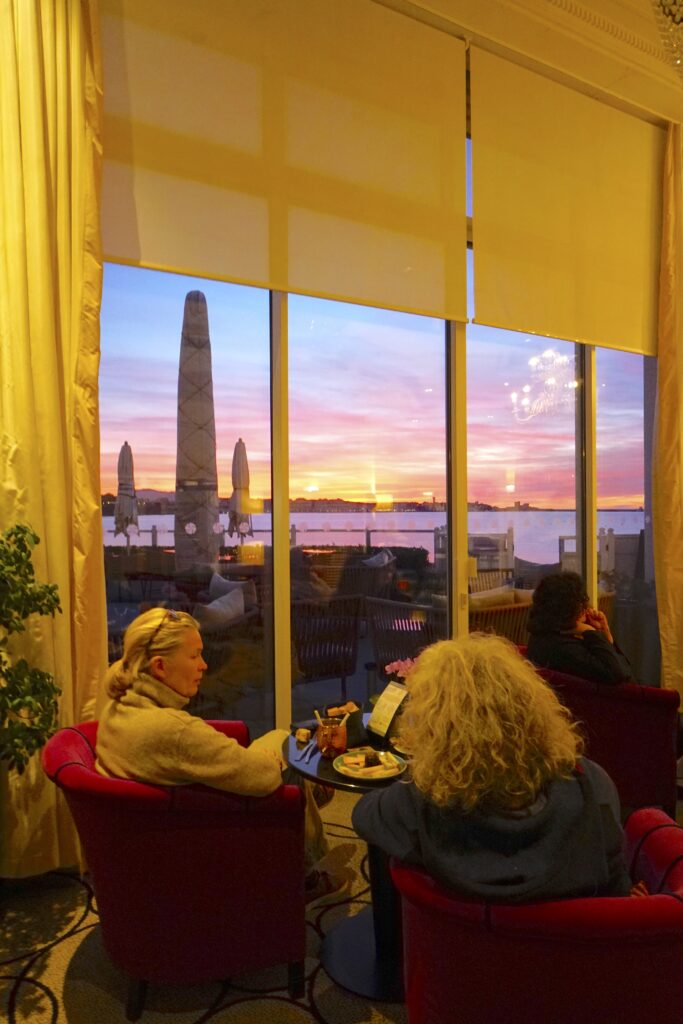
Open Monday to Sunday, for lunch and dinner, the restaurant offers a quality culinary experience: its chef since 2022, Jean-Christophe Burlaud, offers refined, locavore-inspired cuisine inspired by the south-west.
He explains that he fuses traditional Basque products with new culinary flavours discovered during his various travels and especially during his long period in Brazil. In short, he offers an international cuisine with Latin American influences combined with Basque products from the land and the sea, a cuisine cited by the Michelin Guide 2023. Each product is carefully selected from trusted local producers and partners.

Ossau - Iraty cheese.
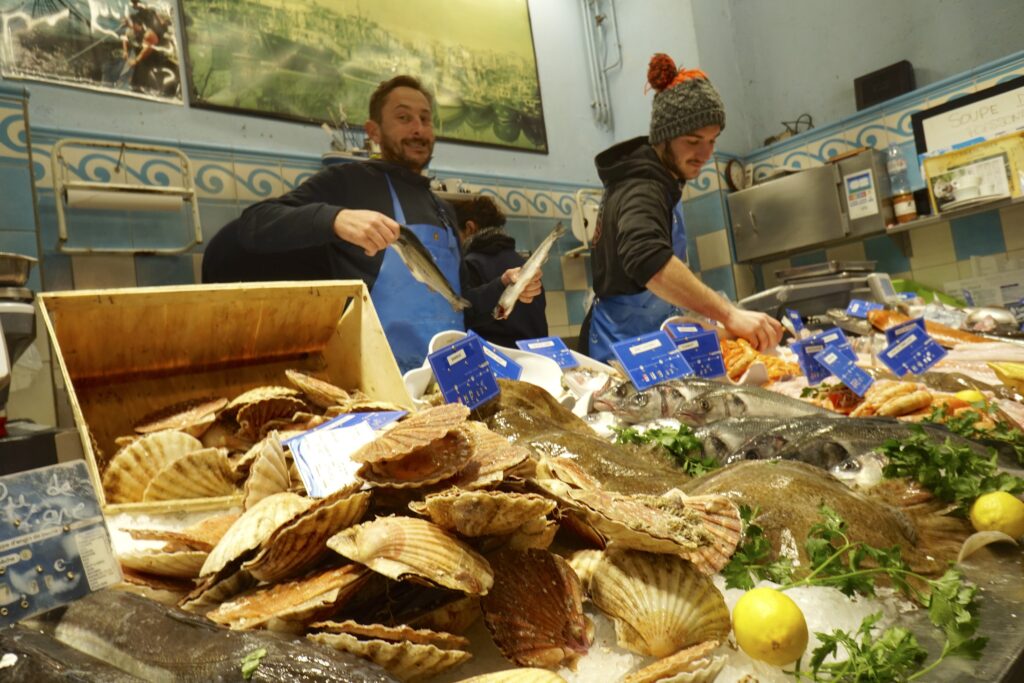
Jean-Christophe Burlaud guides us to the grandiose Halles for his morning orders, as well as the stand of Madame Mourare who celebrates her tomes of Ossau-Iraty "Artzainak" cheese supplied by her Lacaune ewes, or the fishmonger Fagoaga who runs a fishing boat himself.
Text and Photos : Sylvain Grandadam unless otherwise stated.


